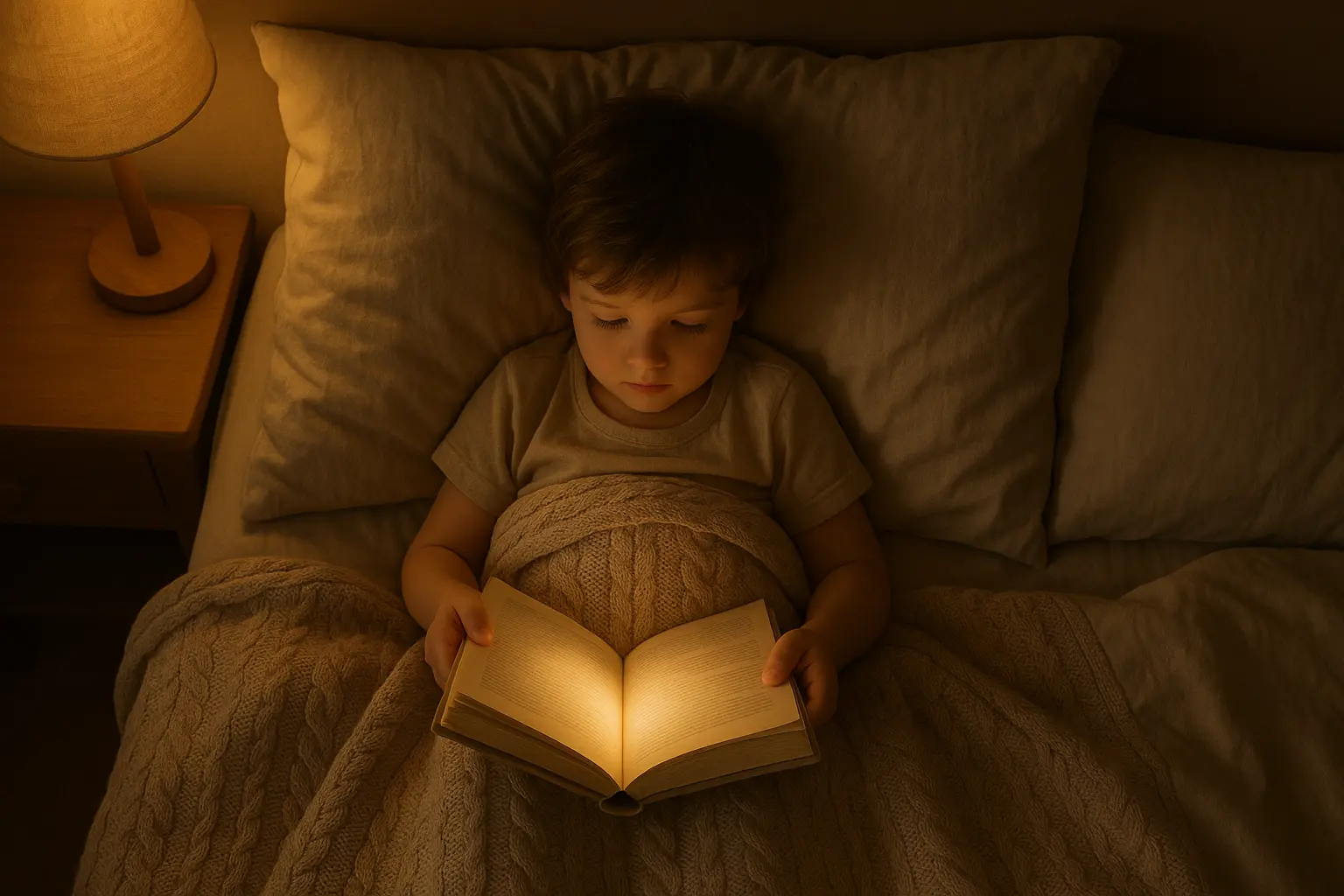Every night, millions of parents around the world engage in one of humanity's oldest traditions: telling bedtime stories. But what many don't realize is that this simple act is one of the most powerful tools for child development we have.
The Neuroscience of Storytelling
Pediatrician and researcher Dr. John Hutton (Cincinnati Children's Hospital) used fMRI scans to show that shared reading and storytelling activates not only children’s language centers but also brain regions tied to imagery and meaning-making, strengthening overall comprehension.
Language Development Centers
When children listen to stories, regions of the brain that help kids learn new words and make sense of language (Broca's and Wernicke's areas) light up, processing both the structure and meaning of language. This dual activation accelerates vocabulary acquisition and grammar understanding.
Memory Formation
The hippocampus works overtime during storytelling, forming both explicit memories (the story details) and implicit memories (emotional associations with reading and learning).
Emotional Processing
Stories engage the limbic system, helping children understand and process complex emotions in a safe, controlled environment.
The "Story Advantage" in Brain Development
According to the Harvard Center on the Developing Child, children who are regularly read to show stronger neural connectivity:
- Enhanced neural connectivity between language and reasoning centers
- Stronger executive function skills by age 5
- Better emotional regulation capabilities
- Increased empathy and social awareness
Sleep Quality and Learning Consolidation
Bedtime stories don't just prepare children for sleep—they optimize the learning that happens during sleep:
The Transition Effect
Sleep researcher Dr. Matthew Walker (University of California, Berkeley) explains that consistent bedtime routines—like storytelling—help the brain shift into a calm state, optimizing memory consolidation and emotional processing during sleep. This transition is crucial for:
- Memory consolidation: The brain processes and stores the day's learning during sleep
- Emotional processing: Dreams help children work through experiences and emotions
- Growth hormone release: Deep sleep triggers physical and cognitive development
The "Goldilocks Zone" of Stimulation
Ever noticed how kids seem calmer after a bedtime story? That’s not an accident — their brains are literally shifting gears. Good bedtime stories provide just the right amount of mental stimulation—enough to engage the imagination but not so much as to cause excitement or anxiety.
Building Neural Pathways for Success
The regular rhythm of bedtime stories creates lasting neural pathways that benefit children throughout their lives:
Pattern Recognition
Stories follow predictable structures that help children recognize patterns—a skill fundamental to:
- Mathematical thinking
- Scientific reasoning
- Social understanding
- Problem-solving
Abstract Thinking
Through metaphors, symbolism, and moral lessons, stories develop abstract thinking capabilities that are essential for:
- Creative problem-solving
- Ethical reasoning
- Future planning
- Complex communication
The Bonding Chemical: Oxytocin
Neuroscientist Dr. Ruth Feldman (Bar-Ilan University) found that shared rituals such as storytelling increase oxytocin—the ‘bonding hormone’—which deepens parent–child attachment and helps regulate children’s stress. (Link: Study on oxytocin and parent–infant contact) This creates:
- Stronger parent-child attachment
- Increased feelings of safety and security
- Better stress regulation in children
- Enhanced social bonding capabilities
Cultural Transmission and Identity
Stories serve as vehicles for cultural transmission, helping children understand:
- Family values and traditions
- Cultural identity and belonging
- Moral and ethical frameworks
- Historical context and continuity
The Digital Age Challenge
While screen-based stories can be engaging, research shows that traditional storytelling offers unique benefits:
Human Connection
The presence of a caring adult during storytelling provides:
- Emotional attunement
- Responsive interaction
- Personalized pacing
- Immediate comfort and reassurance
Imaginative Flexibility
Without visual constraints, children's imaginations are free to:
- Create their own mental images
- Develop visualization skills
- Exercise creative thinking
- Build personal meaning
Maximizing the Bedtime Story Benefits
To optimize the developmental benefits of bedtime stories:
Choose Age-Appropriate Content
- Ages 2-4: Simple plots, repetitive elements, familiar concepts
- Ages 5-7: More complex narratives, character development, moral lessons
- Ages 8+: Longer stories, deeper themes, discussion opportunities
Create Consistent Routines
- Same time each night
- Comfortable, dedicated space
- Minimal distractions
- Calm, soothing voice
Encourage Interaction
- Ask open-ended questions
- Encourage predictions
- Discuss characters' feelings
- Connect stories to real life
The Long-Term Impact
Studies tracking children into adulthood show that those who regularly heard bedtime stories demonstrate:
- Higher academic achievement
- Better emotional intelligence
- Stronger relationships
- Greater life satisfaction
- Enhanced creativity and innovation
Beyond the Individual: Societal Benefits
When parents prioritize bedtime stories, entire communities benefit through:
- Reduced behavioral problems in schools
- Higher literacy rates
- Stronger family units
- Increased empathy and social cohesion
Conclusion
Reading a bedtime story seems simple. But it’s one of the most powerful tools you have as a parent — strengthening your child’s brain, emotions, and bond with you all at once.
In our fast-paced, technology-driven world, the ancient tradition of storytelling remains one of the most effective tools we have for nurturing healthy, intelligent, emotionally resilient children.
Tonight, when you tuck your child into bed with a story, remember: you're not just helping them fall asleep—you're literally shaping their brain and their future.
Looking for the perfect bedtime stories for your child? Discover how personalized AI-generated stories can make bedtime even more magical. Learn more about StarChild.
